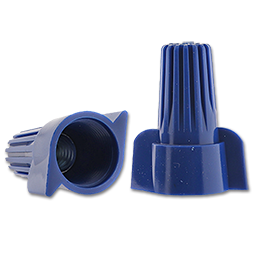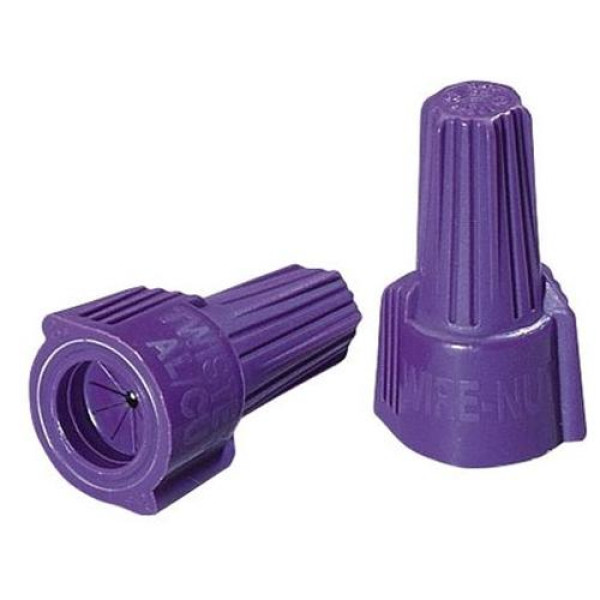

Also, make sure the wires are actually connected by giving them a tug. You can use a non-torque method if you want. It's relatively easy to find (a local big box and a local electrician store both carry them, although they're pricey) and can be installed as DIY as long as you get the lugs tightened to the torque specs (I bought a torque screwdriver since I had so many to replace). They not only splice, they contain anti-oxidant jelly already added. (Copalum, the other splice for this situation, is for electricians only, as it requires special tools). I went with the AlumiConn splicing product. Splicing is the only true safe solution, as it allows the wires to expand at different rates.
PURPLE WIRE NUTS INSTALL
As such, you can "whistle past the graveyard" and install these, hoping you never modify the circuit to where the wires can produce enough heat to work themselves loose into an arc fault. So why doesn't every copper-to-aluminum pigtail fail like this? Mostly it's because, at lower amps, the wires produce very little heat. The wires can work themselves loose inside the nut, creating an arcing situation, and eventually become a fire hazard, as demonstrated by this picture (link defunct) Because copper and aluminum expand at different rates, this allows your pigtails to move some. The problem here is that wires under load will heat up some. What the pigtails fail to address is the other danger of aluminum/copper joining: thermal expansion.

In CPSC-sponsored laboratory testing and life tests, substantial numbers of these connectors overheated severely. The effectiveness of “pigtailing” using twist-on connectors has been evaluated by CPSC staff. This can be deceptive that you've "fixed" the problem and lull you into a false sense of security The Ideal connectors (purple, for aluminum) are not considered a good fix because all they do is contain a paste that is supposed to help prevent corrosion. Specifically, you have to connect the wires individually so they are not prone to corrosion. The only way considered safe to connect copper and aluminum is through a splice connector. I bought a house with aluminum wiring so I had to educate myself on what was so different.


 0 kommentar(er)
0 kommentar(er)
